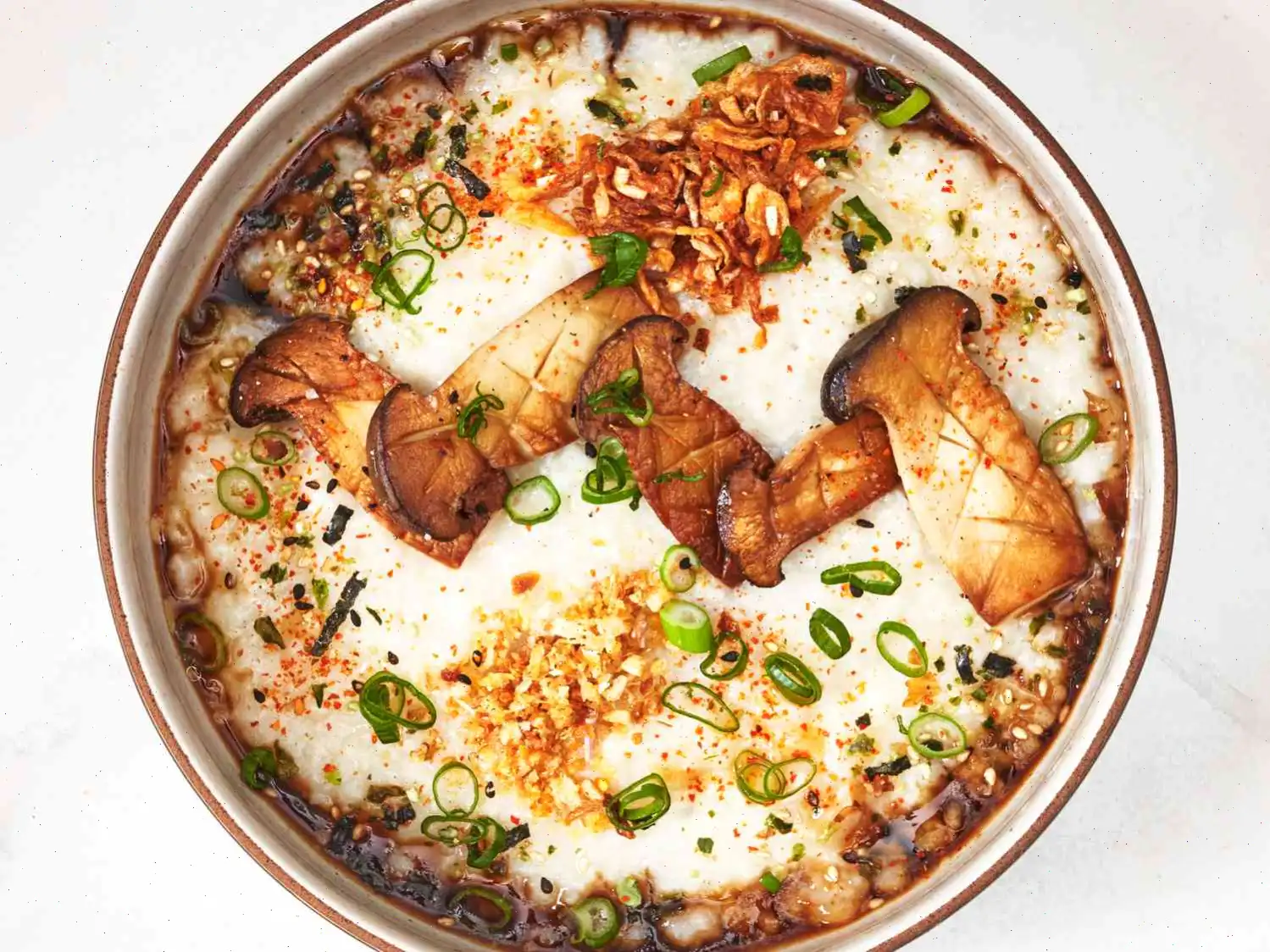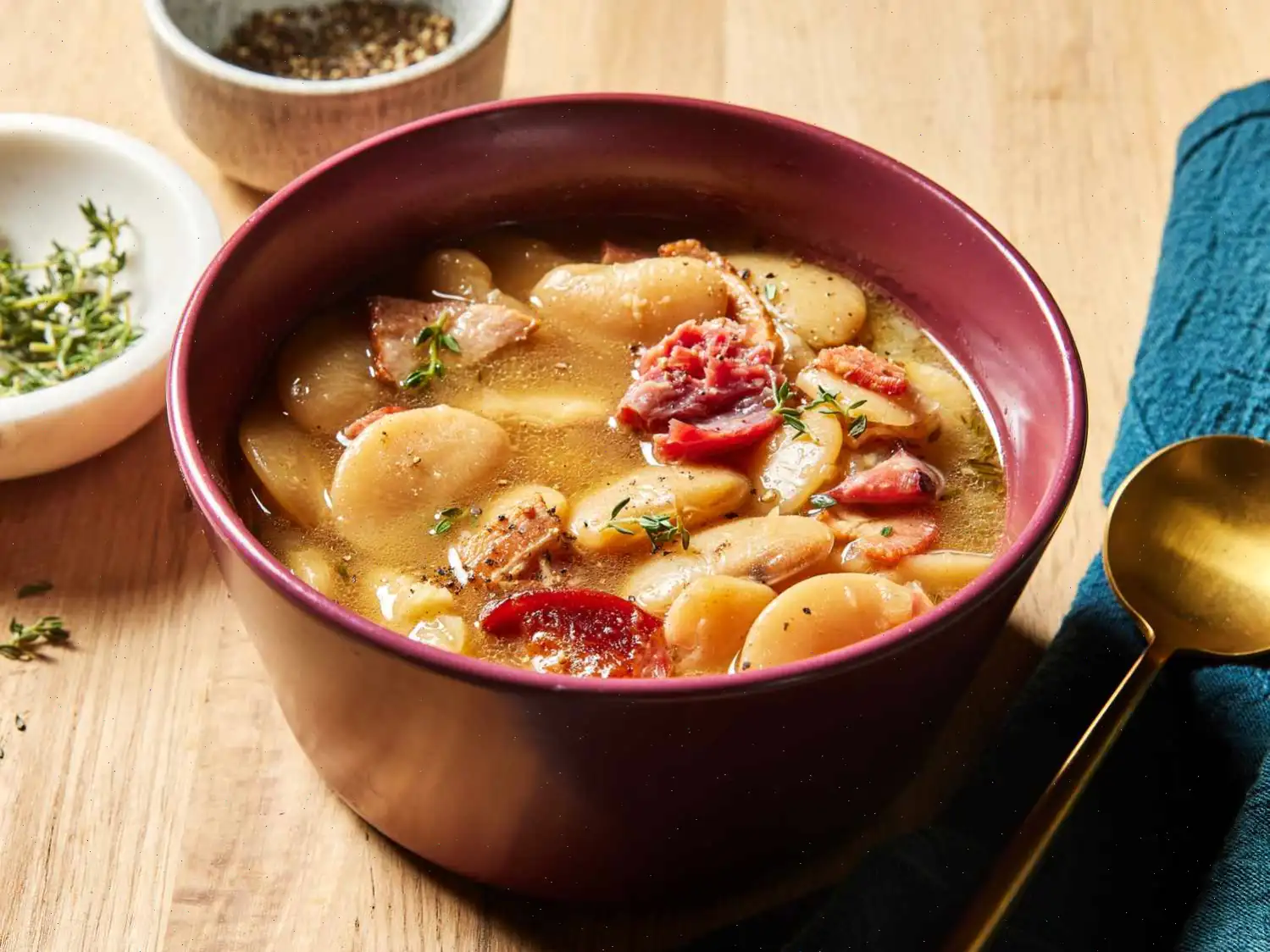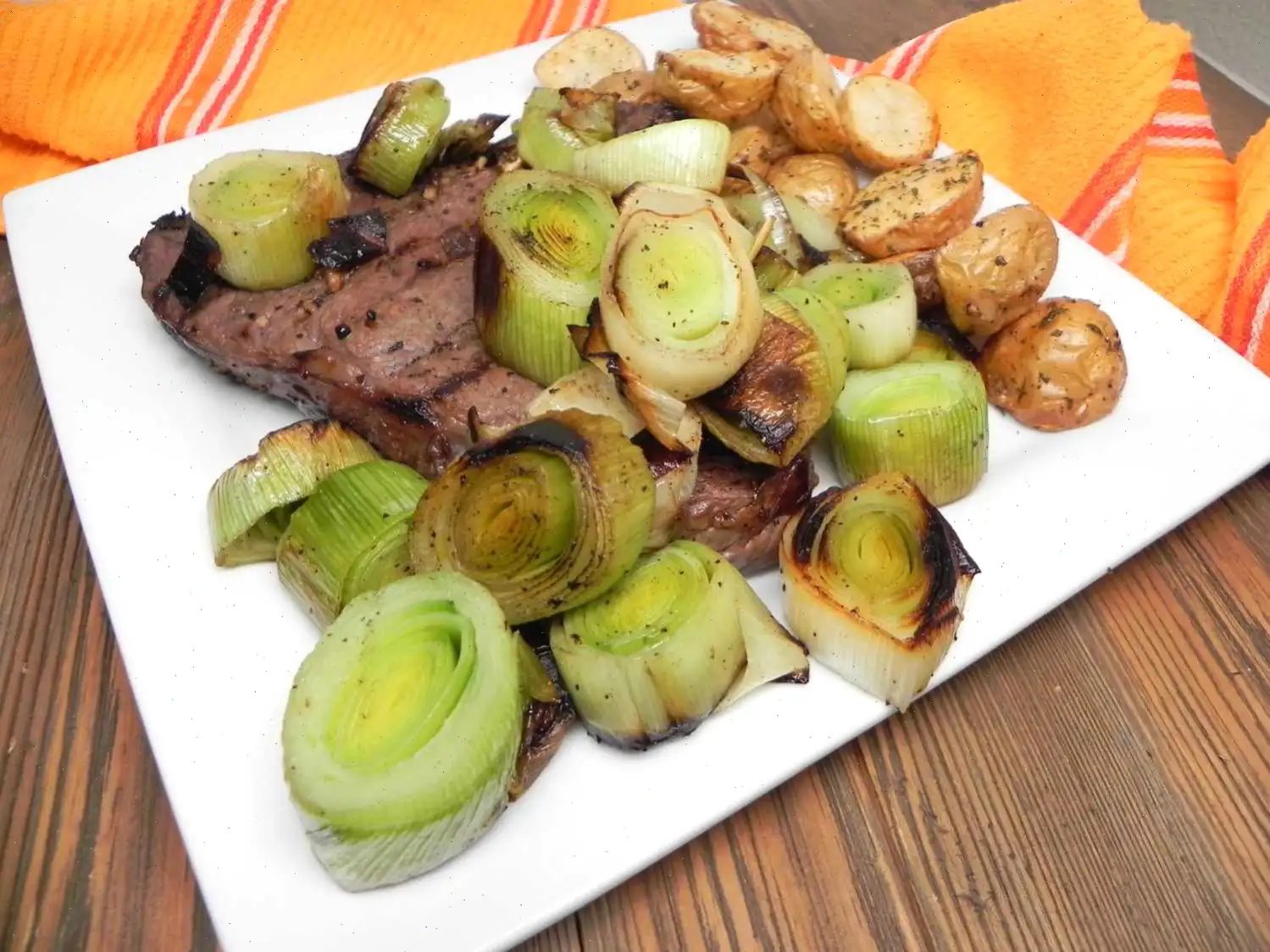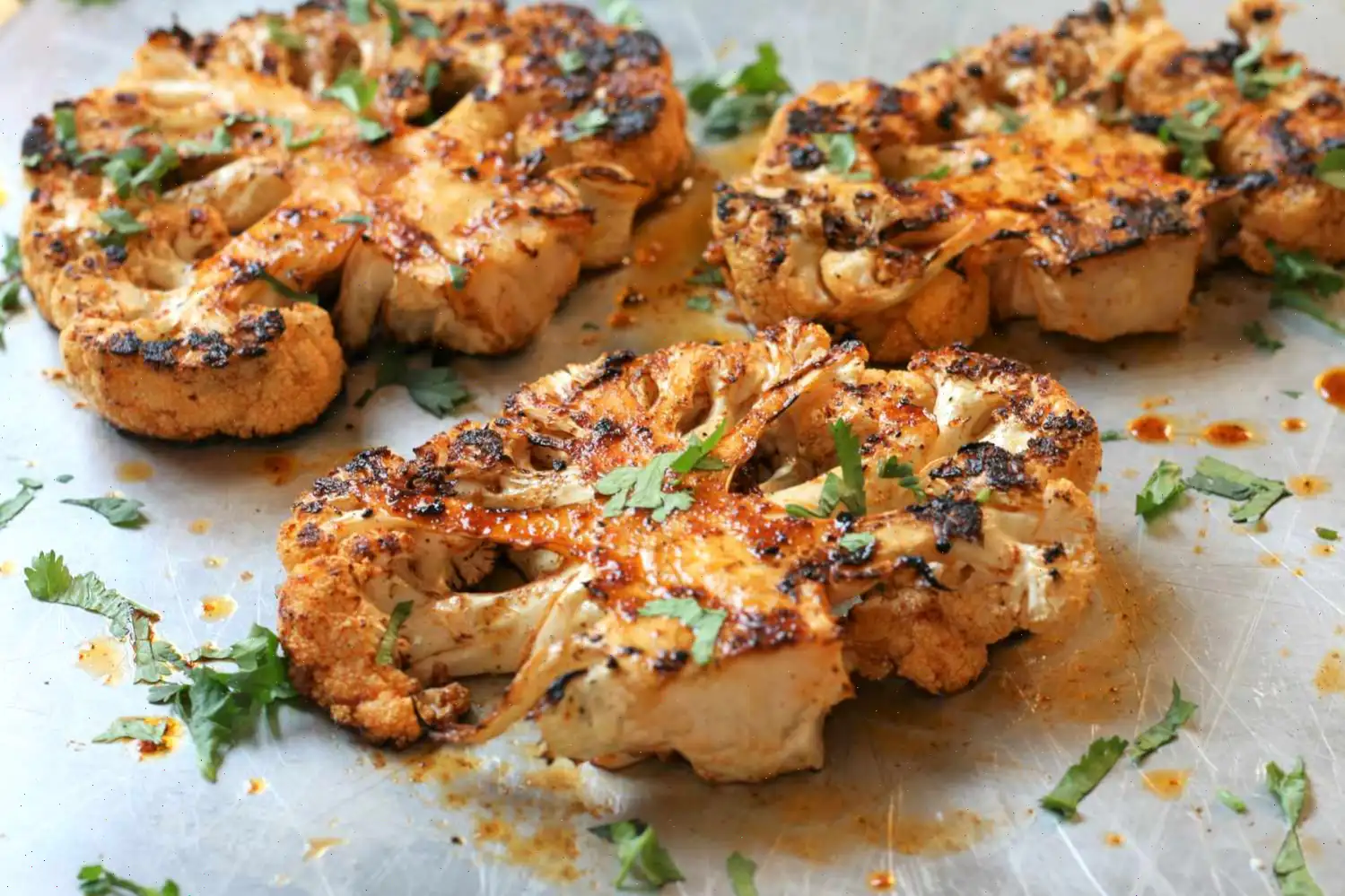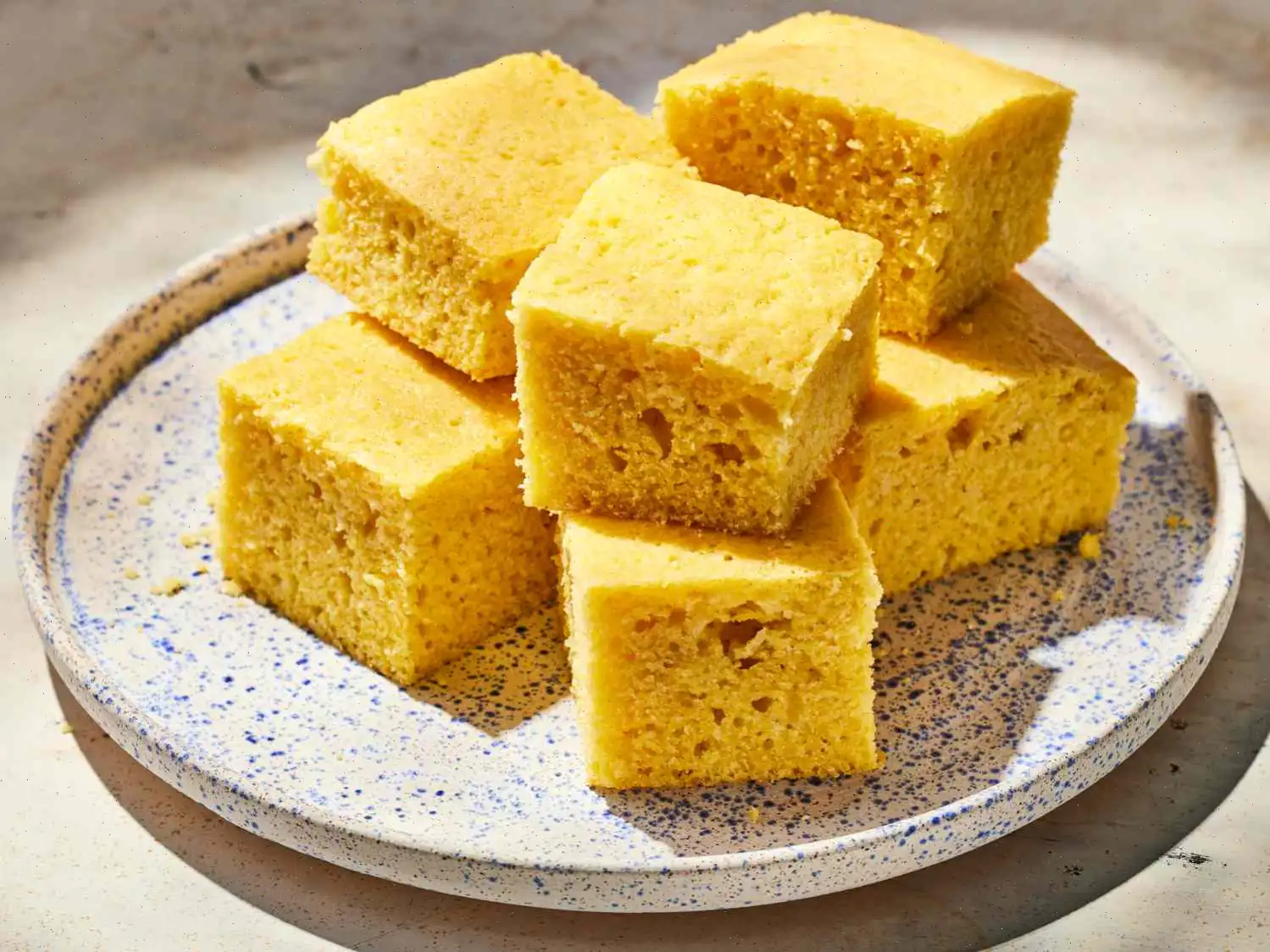
Basic Congee Recipe
Ingredients
This recipe was developed at its original yield. Ingredient amounts are automatically adjusted, but cooking times and steps remain unchanged. Note that not all recipes scale perfectly.
Original recipe (1X) yields 4 servings:
- 7 cups stock
- 1 cup rice
- 1/4 teaspoon salt, or to taste
- 3 tablespoons thinly sliced fresh ginger
Directions
Step 1: In a large saucepan, combine the stock, rice, salt, and ginger.
Step 2: Bring the mixture to a boil over medium heat, stirring occasionally. Make sure the rice doesn't stick to the bottom of the pan.
Step 3: Once the mixture reaches a boil, reduce the heat to low. Let it simmer for 1 hour, stirring occasionally to ensure the rice cooks evenly.
Nutrition Facts (per serving)
- Calories: 205
- Fat: 5g
- Carbs: 26g
- Protein: 12g
Nutrition Facts
| Servings Per Recipe | 4 |
| Calories | 205 |
| Total Fat | 5g (7% Daily Value) |
| Saturated Fat | 1g (7% Daily Value) |
| Cholesterol | 13mg (4% Daily Value) |
| Sodium | 747mg (32% Daily Value) |
| Total Carbohydrate | 26g (10% Daily Value) |
| Dietary Fiber | 0g (1% Daily Value) |
| Total Sugars | 7g |
| Protein | 12g (23% Daily Value) |
| Vitamin C | 1mg (1% Daily Value) |
| Calcium | 17mg (1% Daily Value) |
| Iron | 1mg (5% Daily Value) |
| Potassium | 467mg (10% Daily Value) |
* Percent Daily Values are based on a 2,000 calorie diet. Your daily values may be higher or lower depending on your calorie needs.
** Nutrient information is not available for all ingredients. Amount is based on available nutrient data.
(-) Information is not currently available for this nutrient. If you are following a medically restrictive diet, please consult your doctor or registered dietitian before preparing this recipe for personal consumption.
The Story and Cultural Significance of Congee
Congee, often described as a rice porridge or rice soup, traces its origins back over 2,000 years in China. It was originally a humble dish prepared by boiling rice with an abundance of water, intended to stretch limited ingredients while creating a nourishing meal. Throughout history, congee became a staple for the elderly, children, and those recovering from illness, thanks to its easily digestible nature. Its simplicity made it an enduring comfort food that transcended social classes, from the peasant kitchens to imperial tables.
Regional Variations and Unique Twists
While congee is widely associated with Chinese cuisine, almost every Asian country has its own adaptation. In southern China, congee is often smooth and thin, sometimes enhanced with century eggs or pork. In northern China, it tends to be thicker, resembling a hearty porridge. Across Asia, Japan has okayu, Korea has juk, Thailand enjoys jok, and India has its own rice-based porridges flavored with spices. Each region adapts the dish to local tastes, incorporating seafood, meats, vegetables, or spices unique to that area.
What Sets Congee Apart from Similar Dishes
Unlike rice pudding, which is sweet and often baked, or risotto, which uses a creamy texture from stirred starch, congee is a savory or mildly flavored rice porridge simmered slowly in stock or water. Its defining characteristic is the soft, almost creamy texture of broken-down rice grains, creating a subtle, comforting base. This distinguishes it from soups where rice remains intact or porridge where sugar is typically the primary flavor.
Typical Serving Occasions
Congee is versatile in its service. Traditionally, it is served for breakfast in many Asian households. However, it is also a common feature in hospital meals, home remedies for the sick, and even as street food. In restaurants, congee can be elevated with premium toppings such as sliced scallions, fried shallots, shredded chicken, preserved eggs, or seafood. It is often accompanied by side dishes like pickled vegetables, tofu, or steamed buns.
Interesting Facts About Congee
- The word congee comes from the Tamil word kanji, reflecting the historical influence of South Asian traders in Southeast Asia.
- Congee can be both a savory or sweet dish; sweet versions often include red beans, dates, or coconut milk.
- Some traditional medicinal practices in Asia consider congee to have warming properties, believed to aid digestion and strengthen the body.
- It has inspired modern fusion dishes, including congee with truffle oil, cheese, or Western-style breakfast toppings.
- Despite its simplicity, congee requires careful simmering to achieve the perfect silky texture, making it a labor of patience and love.


